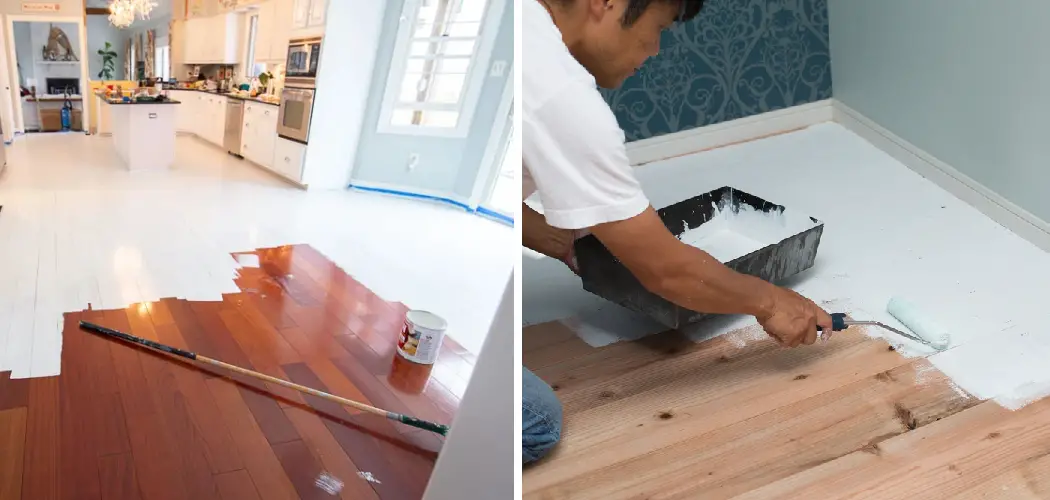Are you looking for a way to give your hardwood floors a dramatic and vibrant look? Are you considering sprucing up your home or office space by painting your hardwood floor? Painting them is an easy and cost-effective solution that can make any room appear more polished. With the right techniques, painting wood floors is quite straightforward and can add color, flair, and style to aesthetically transform any living space!
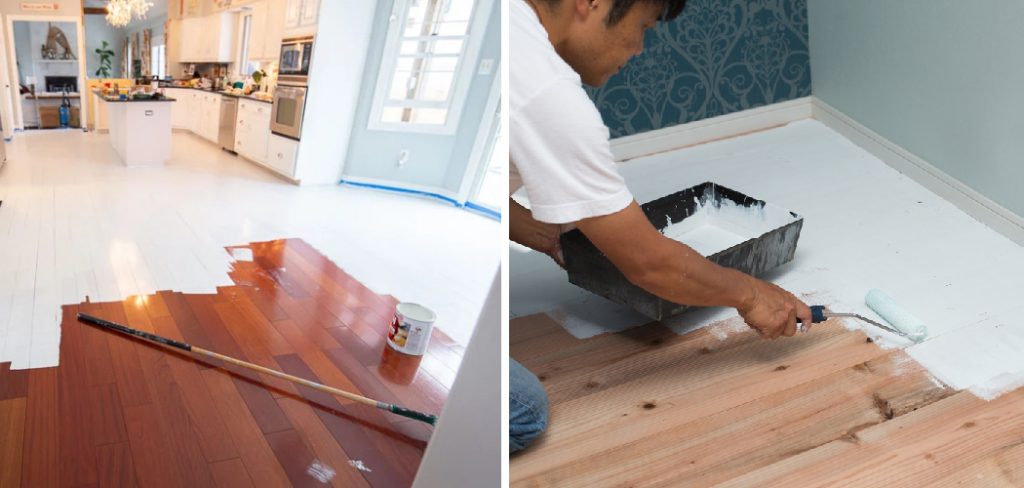
In this blog post, we will break down everything you need to know about how to paint hardwood floors – from what materials are most appropriate for the job, the best steps for prepping your surface before painting, and helpful tips on perfecting your end result so if you’re considering giving your home’s flooring a new lease of life with some fresh color – read on!
With these helpful tips and tricks for painting a hardwood floor, you’ll have the beautiful transformation you want in no time!
The Benefits of Painting Hardwood Floor
1. Add Style
Painting hardwood flooring has many advantages. To start, it’s an economical way to liven up a room without the cost of replacing or refinishing your existing floors. Additionally, painting allows you to customize the color and design of the room according to personal preference. You can also use paint to successfully hide minor signs of wear on older floors that otherwise need repairs.
2. Durability
When you opt for paint over traditional flooring solutions, you don’t have to worry about the surface becoming easily damaged or worn down – paint can withstand quite a bit of wear and tear, making it an ideal choice for high-traffic areas like hallways and living rooms. Plus, if used correctly, paint can last for years.
What Materials Do You Need?
Before you begin your project, it’s important to make sure that you have the right materials on hand. Here are some of the supplies you need in order to paint hardwood floors:
- Sandpaper
- Primer
- Paint – either water-based or oil-based
- Paintbrush
- Roller
- Rags and clothes for cleaning
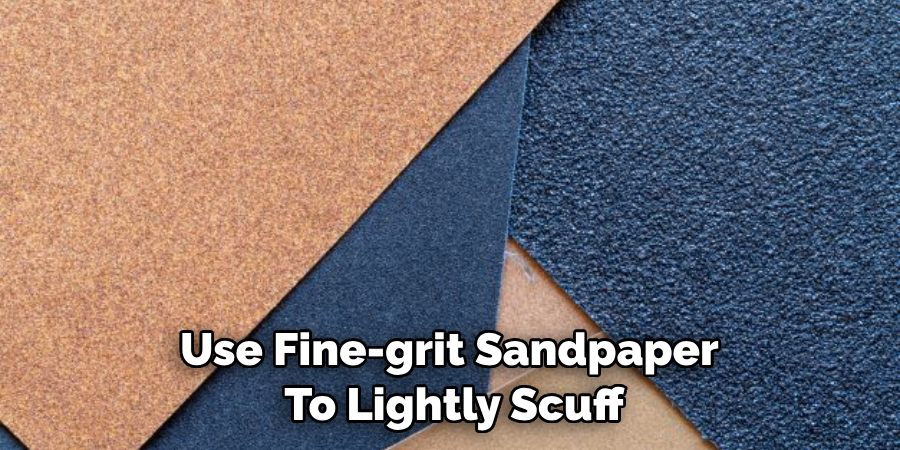
Preparing the Floor for Painting
The most important step in painting your hardwood floors is to properly prep the surface. This will ensure that your paint job lasts longer and looks great. Here are some tips to make sure you have the best results:
1. Sanding
Sanding will help to create a smooth and even surface on which you can paint. Use fine-grit sandpaper to lightly scuff the entire floor, making sure not to damage it in the process. Once finished, use a vacuum and damp cloth to clean up all of the dust particles.
2. Priming
Primer is essential for creating a lasting paint job on your floor. It will help to seal the wood and ensure that the paint adheres correctly. Make sure you use a primer that is specifically designed for floors, as regular wall primers are not strong enough to adequately protect your hardwood surface.
How to Paint Hardwood Floor in 8 Easy Steps
Once you’ve finished prepping the surface, it’s time to get busy with the brush and roller. Here are some tips for getting the perfect paint job on your hardwood floor:
Step 1: Choose the Right Paint
When selecting paint, make sure you choose one that is specifically designed for floors. Avoid water-based paint, as it is more likely to peel and flake over time. Oil-based paint will provide the best protection and last longer than water-based options.
Step 2: Apply Primer
Apply one coat of primer with a brush or roller, following the manufacturer’s instructions for drying times. Once the primer is dry, lightly sand any areas that may need it.
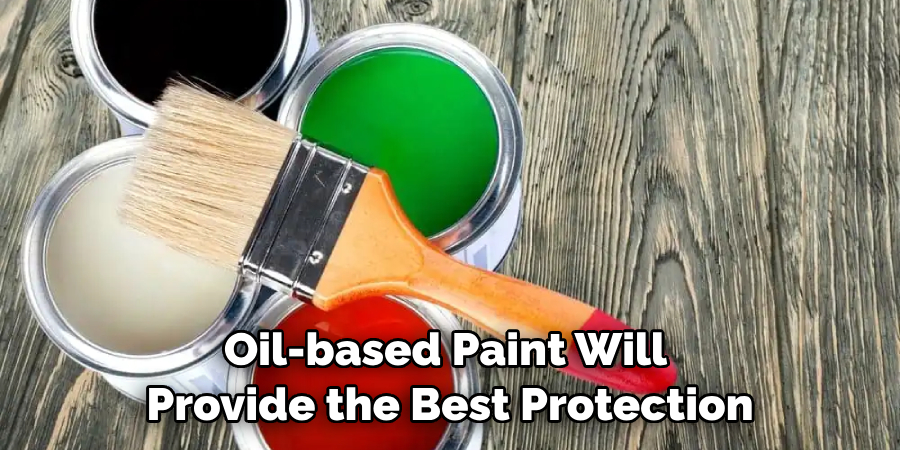
Step 3: Apply the First Coat of Paint
Once the primer is dry, you are ready to apply the first coat of paint. Using a brush or roller, apply one light coat to your hardwood floor and allow it to dry completely before moving on to the next step.
Step 4: Sand Floor
Once the first coat of paint is dry, lightly sand the surface to remove any bumps or imperfections. This will help create a smooth and even finish for your second coat.
Step 5: Apply the Second Coat of Paint
Using a brush or roller, apply another light coat of paint to your floor. Allow the paint to dry before moving on to the next step. Applying a second coat of paint will ensure that your hardwood floor looks even and vibrant.
Step 6: Add Finishing Touches
Once the second layer of paint is dry, you can add some finishing touches to really make your floor shine. Consider adding a glossy clear coat for an extra layer of protection. You may also want to use tape to create decorative patterns or geometric shapes for a unique look.
Step 7: Allow Time to Dry
Allow plenty of time for the paint to dry before you walk on it. This is especially important if you’ve chosen a glossy clear coat, as this type of finish requires more time to properly set and cure.
Step 8: Clean Up
Once the paint is completely dry, you can begin to clean up. Make sure you dispose of all materials according to local regulations – and don’t forget to take pictures of your new hardwood floor!
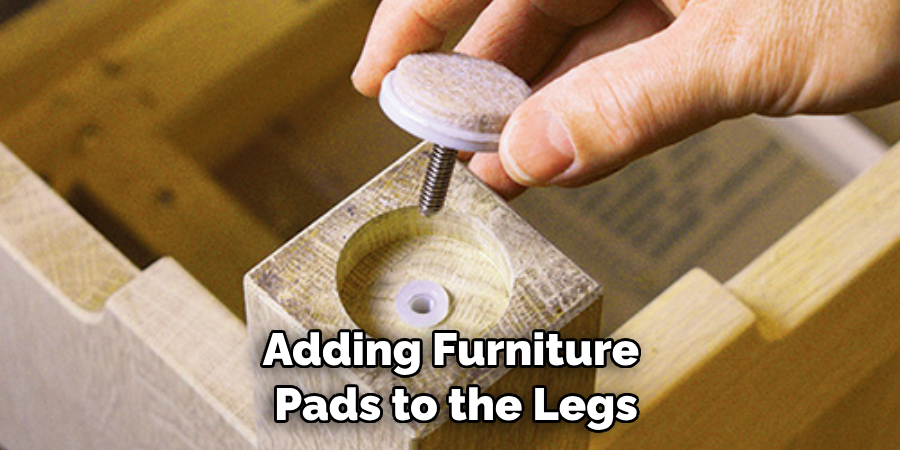
Following these simple steps will help you get the perfect paint job on your hardwood floor. Whether you’re simply covering up minor scratches and blemishes or creating an entirely new look for your room – you can rest assured that your floor is looking its best!
8 Maintenance Tips
Now that your floors are finished, there are a few things you can do to make sure they stay looking great for years to come. Here are some maintenance tips to follow:
1. Use Furniture Pads
Adding furniture pads to the legs of all your furniture will help prevent scratches and scuffs on the floor. Make sure these pads have a non-slip base to keep your furniture from sliding across the floor.
2. Sweep or Vacuum Regularly
Sweeping or vacuuming regularly will help to remove dirt and debris that could get caught in the paint and cause damage over time. Be sure to use a gentle setting on your vacuum cleaner, as aggressive suction can damage the paint.
3. Clean Spills Immediately
If you have any type of liquid spill on your floor, make sure to clean it up right away. This will help prevent the paint from becoming stained or discolored. Use a damp cloth and mild detergent to wipe up spills; never use harsh chemicals or abrasives which could strip away the paint.
4. Avoid Using a Mop
Using a mop on painted hardwood floors is not recommended, as it can remove or chip away the paint. If you need to clean your floor, use a damp cloth and mild detergent instead.
5. Stay Away From Hot Appliances
Hot appliances such as ovens, stoves, and radiators can cause the paint to blister or peel. Make sure you keep these appliances at least three feet away from painted hardwood floors.
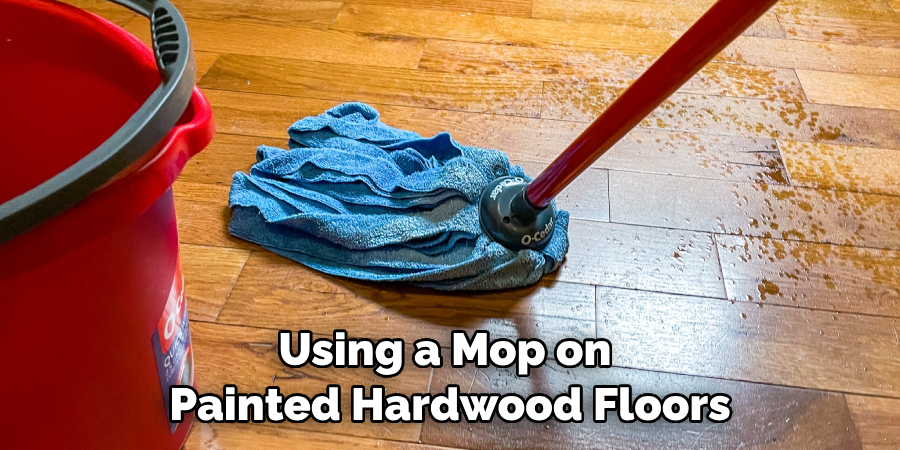
6. Minimize Sun Exposure
Ultraviolet rays from sunlight can fade the colors of your hardwood floor over time. To minimize sun exposure, install blinds or curtains and keep the windows covered whenever possible.
7. Re-coat When Necessary
If you notice any areas of your floor that are beginning to look shabby, it’s time for a new coat of paint. Simply follow the steps outlined in this article, and your hardwood floors should look as good as new!
8. Seek Professional Assistance
If you find that your hardwood floors are in need of more extensive repairs, it’s best to seek out a professional. A flooring expert will be able to determine the best course of action for restoring your floors and keeping them looking their best.
By following these eight maintenance tips, you can ensure that your painted hardwood floors look great for many years to come. With proper care and maintenance, your floor can remain beautiful and vibrant for decades!
Conclusion
All in all, painting your hardwood floor can be a rewarding experience. Not only does it provide you with a chance to completely personalize and customize the look of your floor, but it can also completely change the visual aesthetic of any room. Once you’re done with the project, you’ll have an aesthetically pleasing, low-maintenance hardwood wood floor that’s sure to turn heads.
Additionally, if cared for properly and appropriately sealed from time to time, a painted hardwood floor can last for years without needing any additional maintenance. What’s more, there are a variety of paint types and finishes that you can choose from that further add to the customizability of your painted hardwood floor.
So why wait? Start planning out your project today by determining what type of paint is best for your needs and making a plan for getting the job done efficiently! Following these steps on how to paint hardwood floor and taking the time to properly prepare your hardwood floor for painting will ensure that the results are just as you had imagined.

